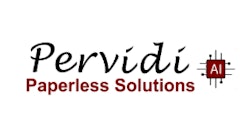Given the fact that we live in an ever growing litigious world, property owners and managers are being advised by their legal counsel and insurance risk managers to insert as much language in their vendor contracts as possible to protect their interests.
One of the ways this is done is by using what is commonly known as Risk Transfer Mechanisms. This can include but not be limited to required coverages for your insurance such as: Additional Insured, Primary Non–Contributory, Waiver of Subrogation, Hold Harmless and Indemnification. In addition, higher limits for General Liability, Auto and Umbrella Liability are being requested, all of which seems to be more the norm and not the exception today. Most of these requirements are non negotiable with your customer.
So, with that said what can you do as a service provider to better protect your interests?
Unfortunately when an incident(s) allegedly takes place on a given property, the first course of action is for the owner to send the complaint to all of the properties service providers and let their respective insurance companies determine who potentially is at fault. Your assigned defense counsel will request a copy of the written contract for review of all terms and conditions. Hopefully they find sufficient language that will help provide you with a solid defense.
All to often we hear the common theme regarding claims as; ( I don’t know why my insurance company paid that claim, we had absolutely nothing to do with it)! This may only be true in some instances but in many, there may not have been the proper wording in your contract for your insurance carrier to dispose of the claim entirely or at the very least, minimize any settlement.
Here are some proven suggestions that could help. Have the following inserted in all contracts if possible:
- Clearly define EXACTLY the scope of services that you are agreeing to perform. Be VERY SPECIFIC about time frames to conduct the work.
- Clearly define the boundaries of the property for which work is to be performed. Some sites have intersecting properties and you don’t want to be responsible for incidents outside of your described premises.
- Document the condition of the site both Pre and Post Service.
- Note any pre-existing hazards prior to commencing work
- Insert the following clause (or similar): "Contractor (your complete company name), cannot be held liable or responsible for any incident or action that arises outside of the defined scope of services for this property as outlined in this agreement. This to include any amendments to said contract mutually agreed thereto."
Please keep in mind that it is strongly suggested to advise your insurance provider with any and all requests regarding specific contract language from your customers. There could be requests for certain coverages and limits that your policy may not currently provide.
You should also consider consulting with your own legal counsel regarding any required or suggested contract wording.
Do all that you can to protect your business!
Happy Sweeping!
This month's NAPSA column is contributed by Scott Cerosky, pavement maintenance insurance consultant (914-714-0787). Scott is a member of the North American Power Sweeping Association (NAPSA) is a nonprofit association made up of 200+ contract sweepers, service providers and sweeping equipment dealers, manufacturers and suppliers. NAPSA is dedicated to providing beneficial support to the membership and enhancing services to the sweeping industry. For more information on NAPSA membership, please visit www.powersweeping.org or call (888) 757-0130.



















